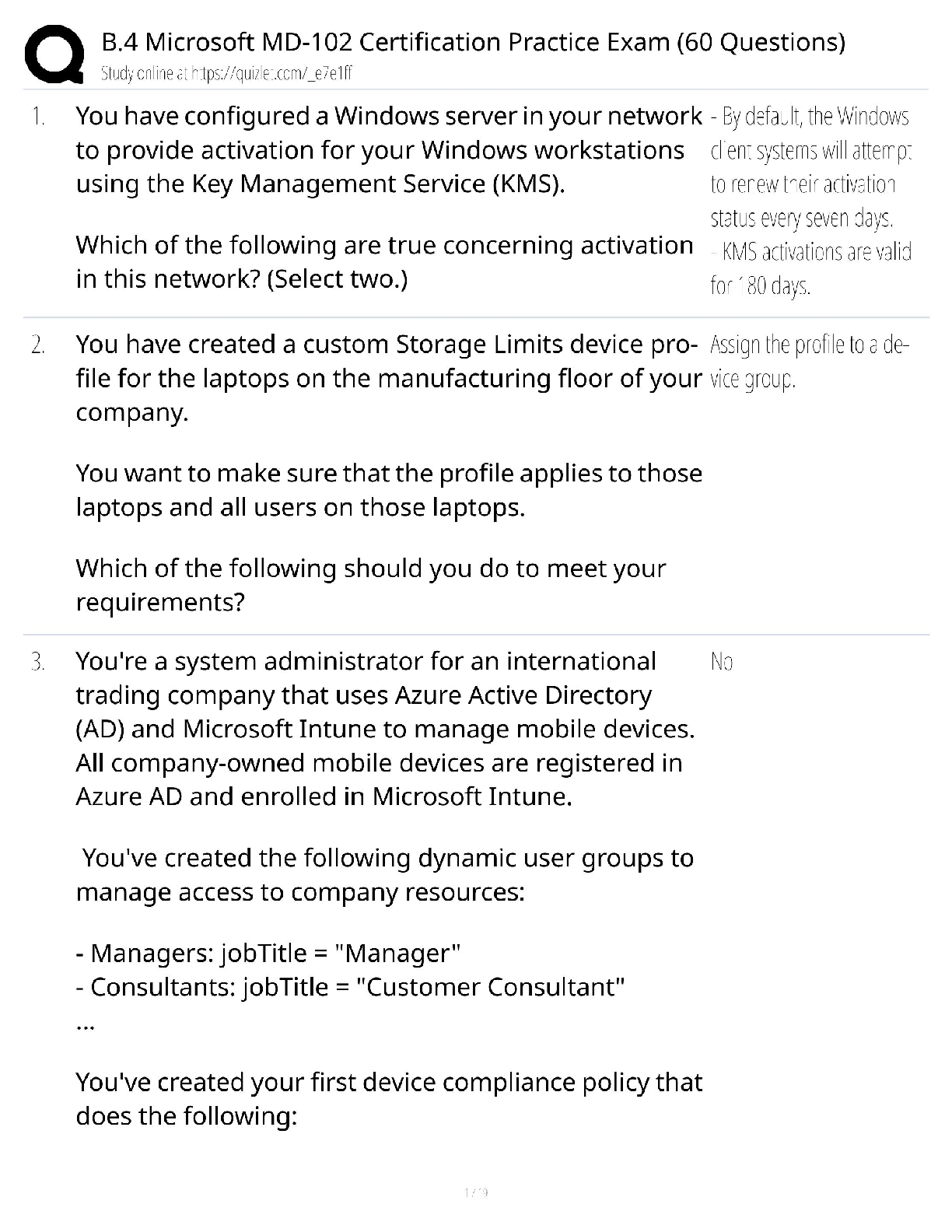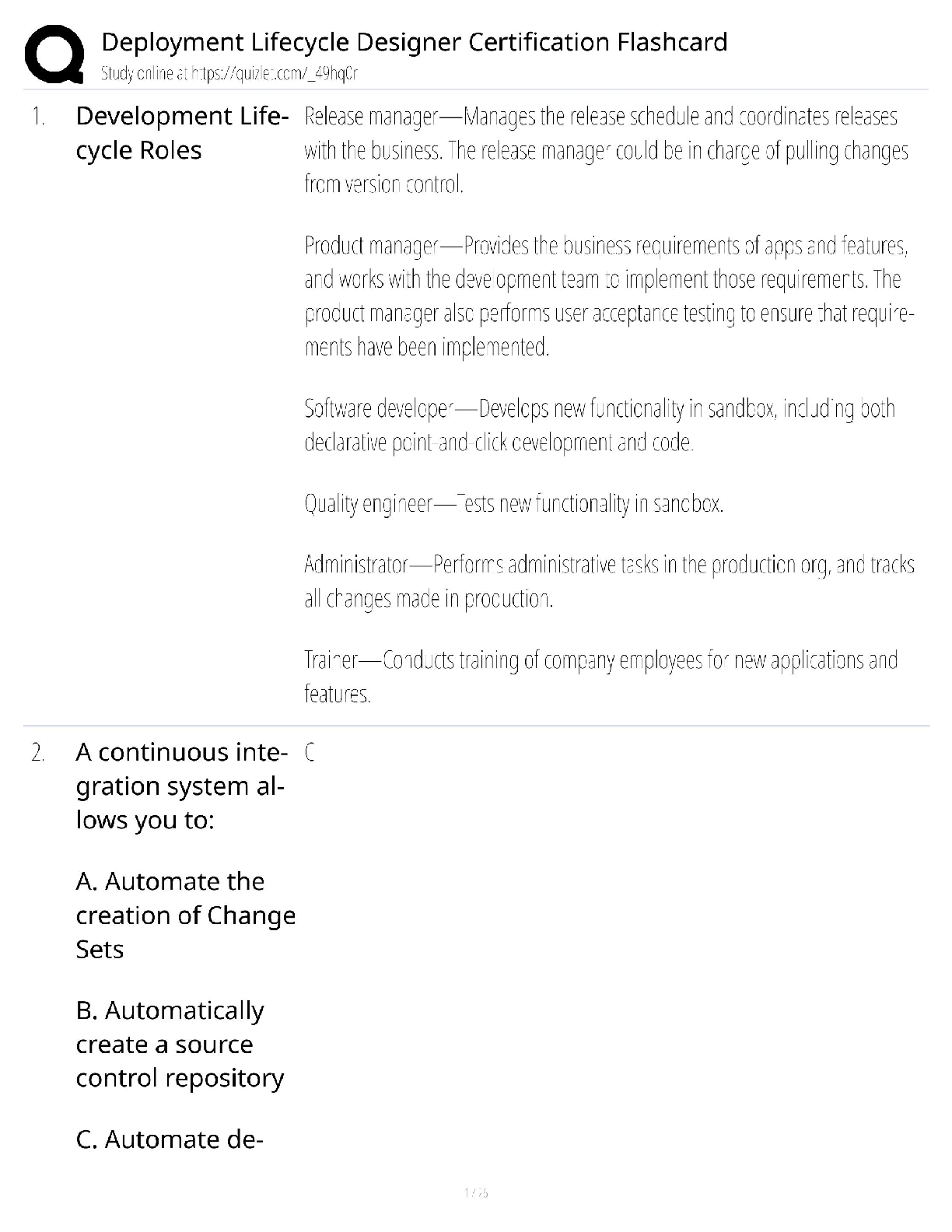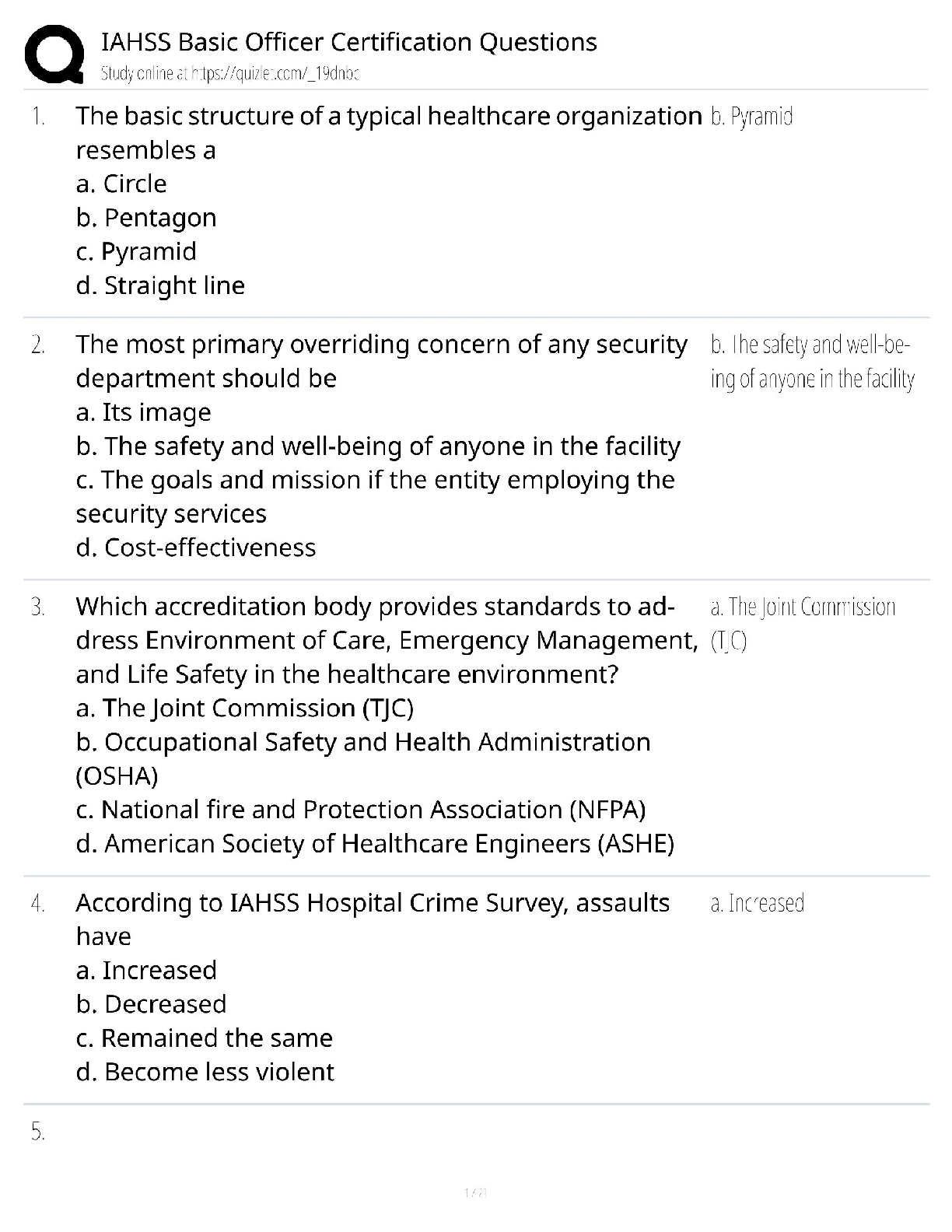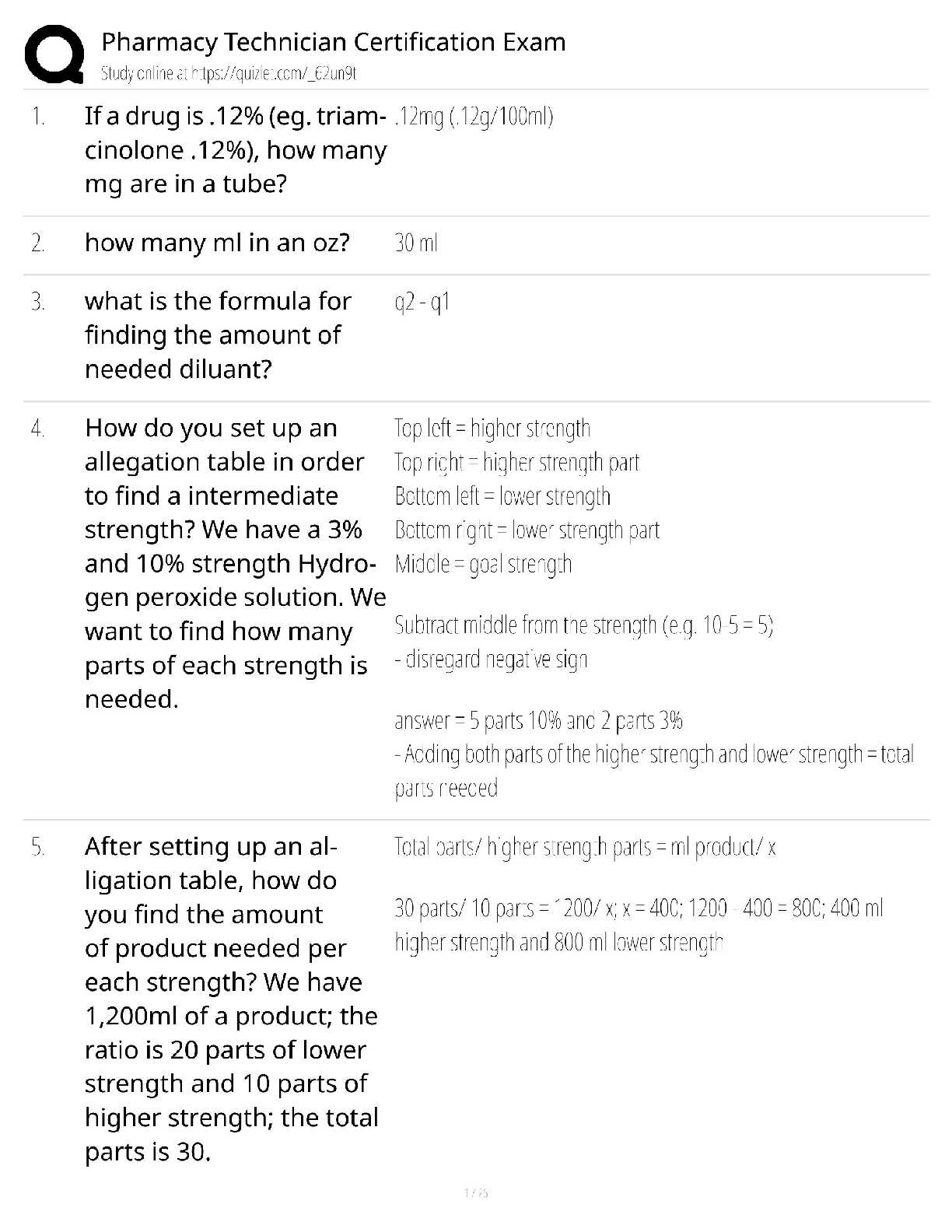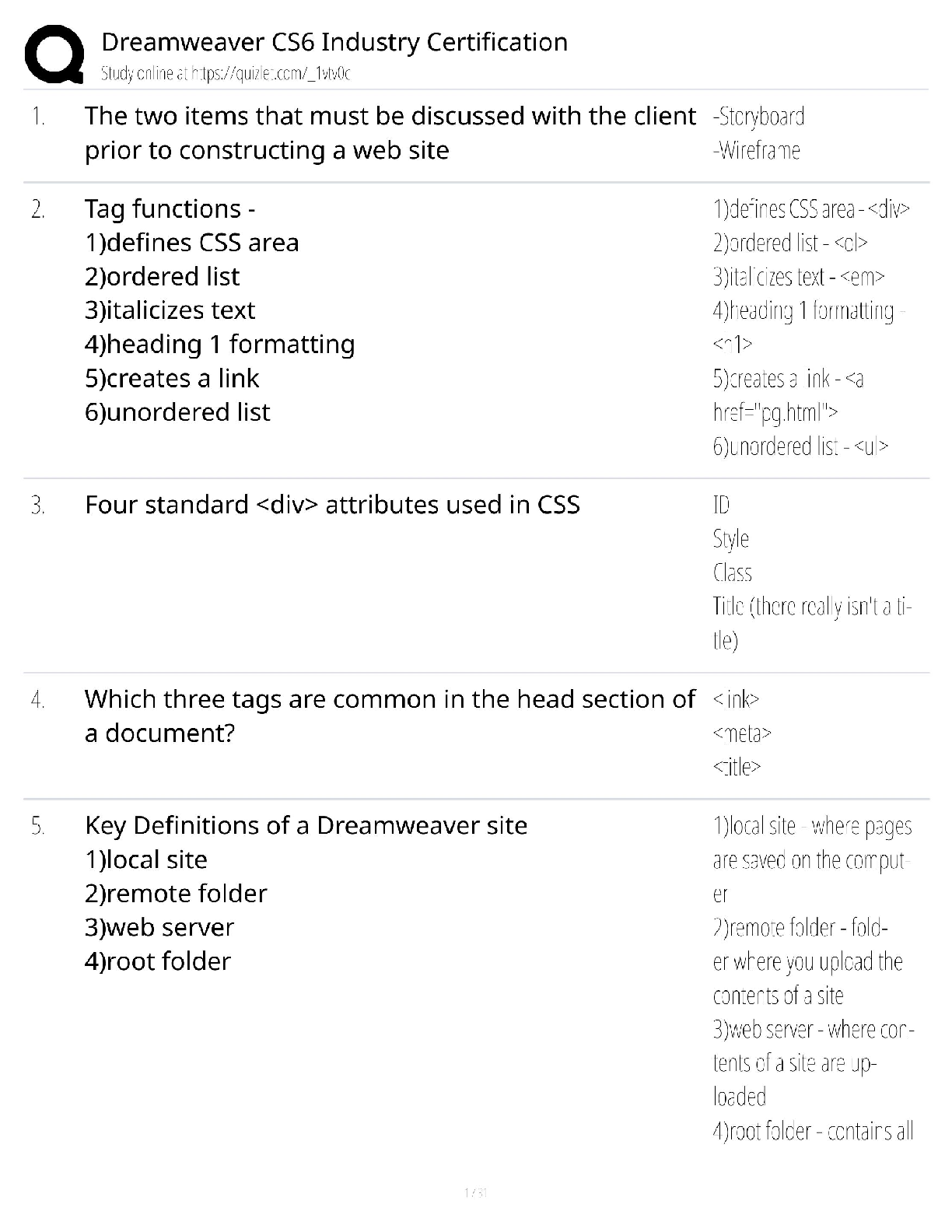Engineering > QUESTIONS & ANSWERS > ISYE 6501 Running head: HOMEWORK 8 – STEPWISE REGRESSION, LASSO AND ELASTIC NET (All)
ISYE 6501 Running head: HOMEWORK 8 – STEPWISE REGRESSION, LASSO AND ELASTIC NET
Document Content and Description Below
Running head: HOMEWORK 8 – STEPWISE REGRESSION, LASSO AND ELASTIC NET 1 Homework 8 – Use Stepwise Regression, Lasso, Elastic net and glmnet Amitava Chatterjee OMS Analytics GATECH – Fall 2019 ... HOMEWORK 8 – STEPWISE REGRESSION, LASSO AND ELASTIC NET 2 Abstract Use different Regression models to look at the crime data with scaling to align and assess alpha across stepwise, lasso, and elastic net regressions. HOMEWORK 8 – STEPWISE REGRESSION, LASSO AND ELASTIC NET 3 Homework 8 – Use Stepwise Regression, Lasso, Elastic net and glmnet Stepwise Regression As per Wikipedia - Stepwise regression is a method of fitting regression models in which the choice of predictive variables is carried out by an automatic procedure. In each step, a variable is considered for addition to or subtraction from the set of explanatory variables based on some prespecified criterion. Lasso As per Wikipedia - Lasso regression is a type of linear regression that uses shrinkage. Shrinkage is where data values are shrunk towards a central point, like the mean. The lasso procedure encourages simple, sparse models (i.e. models with fewer parameters). Elastic net The elastic net is a regularized regression method that linearly combines the L1 and L2 penalties of the lasso and ridge methods. HOMEWORK 8 – STEPWISE REGRESSION, LASSO AND ELASTIC NET 4 Question 11.1 Using the crime data set uscrime.txt from Questions 8.2, 9.1, and 10.1, build a regression model using: 1. Stepwise regression 2. Lasso 3. Elastic net For Parts 2 and 3, remember to scale the data first – otherwise, the regression coefficients will be on different scales and the constraint won’t have the desired effect. For Parts 2 and 3, use the glmnet function in R. Notes on R: • For the elastic net model, what we called λ in the videos, glmnet calls “alpha”; you can get a range of results by varying alpha from 1 (lasso) to 0 (ridge regression) [and, of course, other values of alpha in between]. • In a function call like glmnet(x,y,family=”mgaussian”,alpha=1) the predictors x need to be in R’s matrix format, rather than data frame format. You can convert a data frame to a matrix using as.matrix – for example, x <- as.matrix(data[,1:n-1]) • Rather than specifying a value of T, glmnet returns models for a variety of values of T. Answer 11.1 Solution runs stepwise regression, lasso, and elastic net on both the scaled raw data and principal components found using PCA. The R code for each model covers three things: (1) uses the method to identify a set of variables to use, (2) builds a regression model using those variables, and (3) eliminates the insignificant variables in the regression and then builds a regression using the [Show More]
Last updated: 3 years ago
Preview 1 out of 32 pages
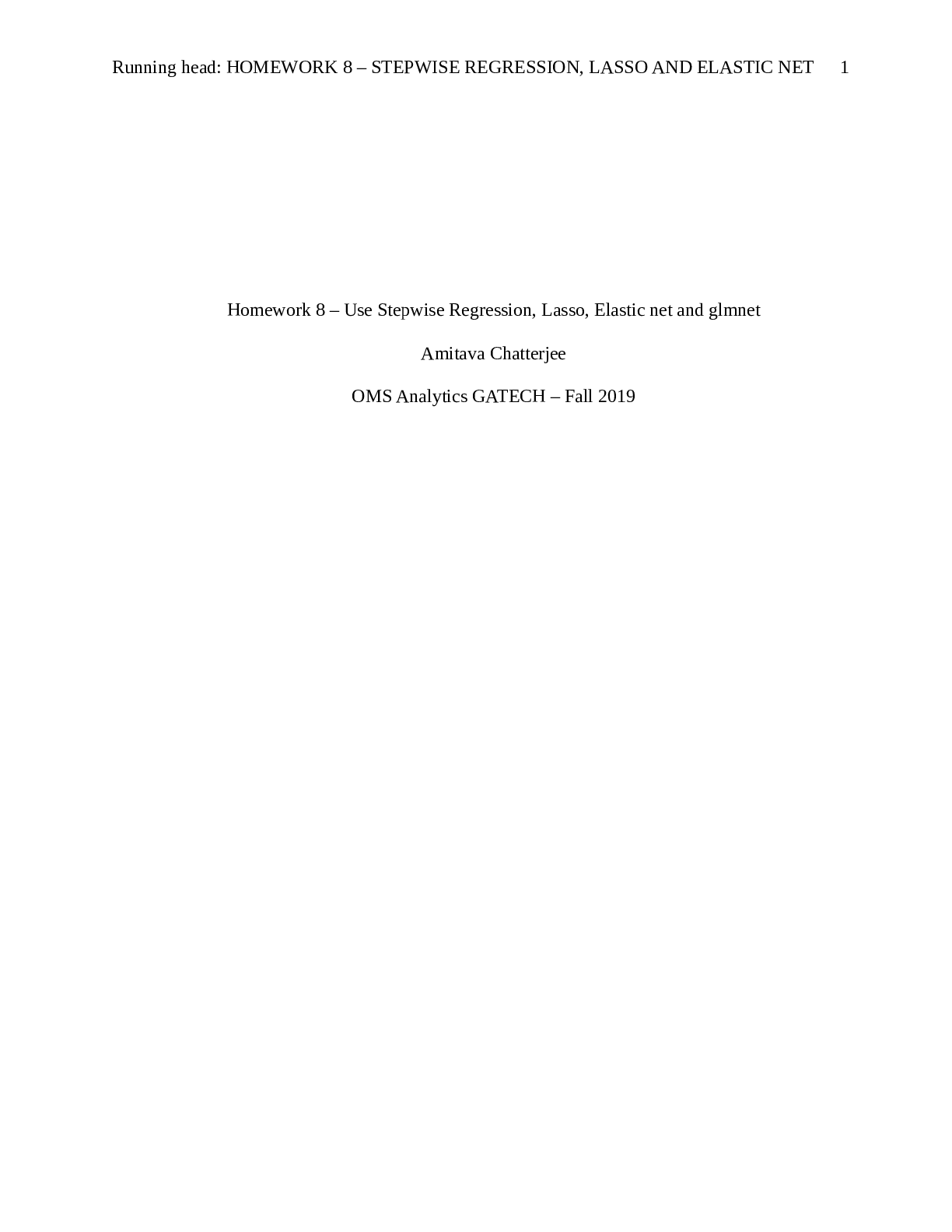
Buy this document to get the full access instantly
Instant Download Access after purchase
Buy NowInstant download
We Accept:

Also available in bundle (1)
Click Below to Access Bundle(s)
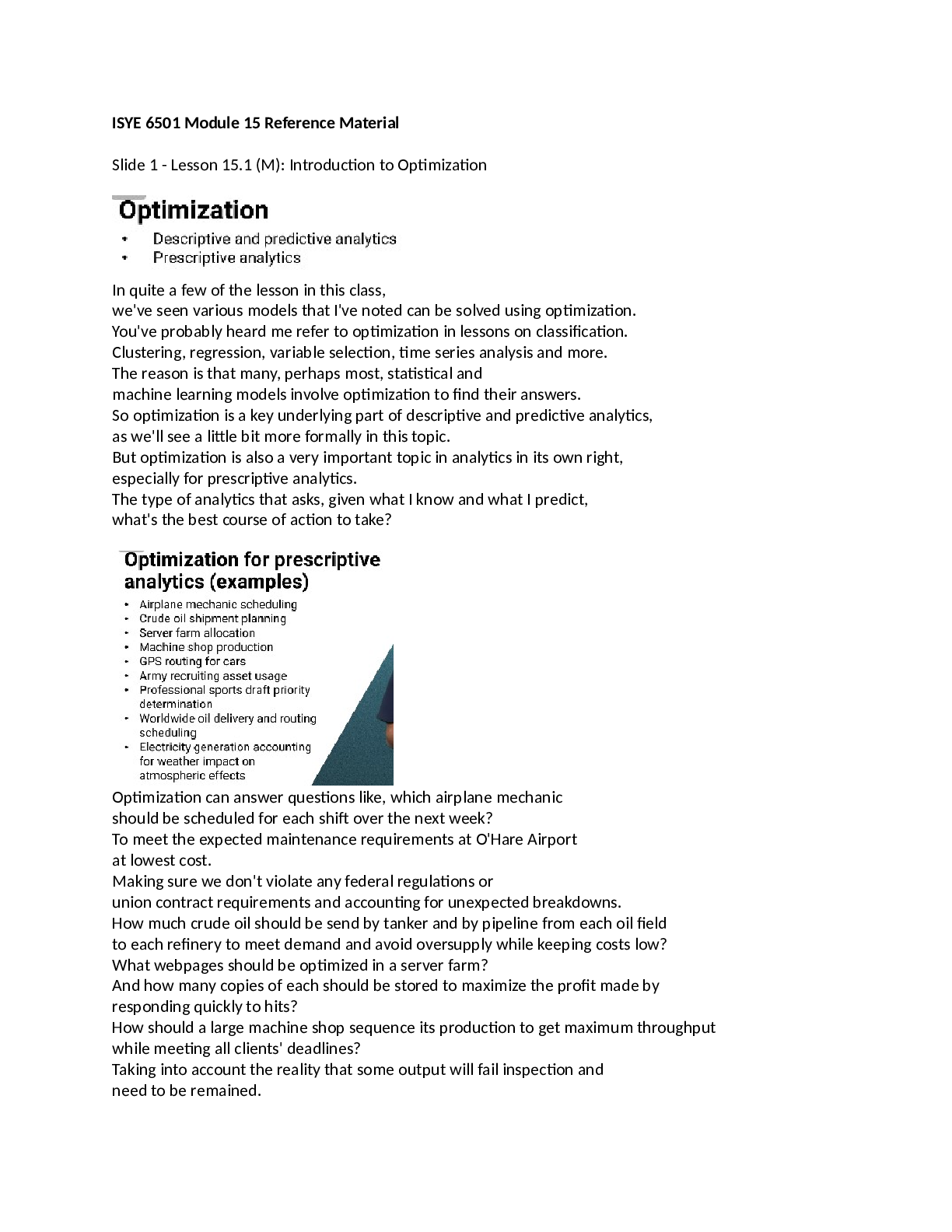
BUNDLED PAPERS (Multiple versions) FOR Georgia Institute Of Technology ISYE 6501 Homeworks 1 - 15, Midterm 1 & 2 + FINAL EXAM | ISYE6501x Courseware | edX - Complete Solutions - Introduction To Analytics Modeling - GTX ISYE 6501
GTx: ISYE6501x Introduction to Analytics Modeling Midterm Quiz 2 - GT Students and Verified MM Learners latest 2021 Midterm Quiz 1 - GT Students (Launch Proctortrack first before taking the Midterm Qu...
By Nutmegs 3 years ago
$15
66
Reviews( 0 )
$10.00
Can't find what you want? Try our AI powered Search
Document information
Connected school, study & course
About the document
Uploaded On
May 19, 2022
Number of pages
32
Written in
All
Additional information
This document has been written for:
Uploaded
May 19, 2022
Downloads
0
Views
169


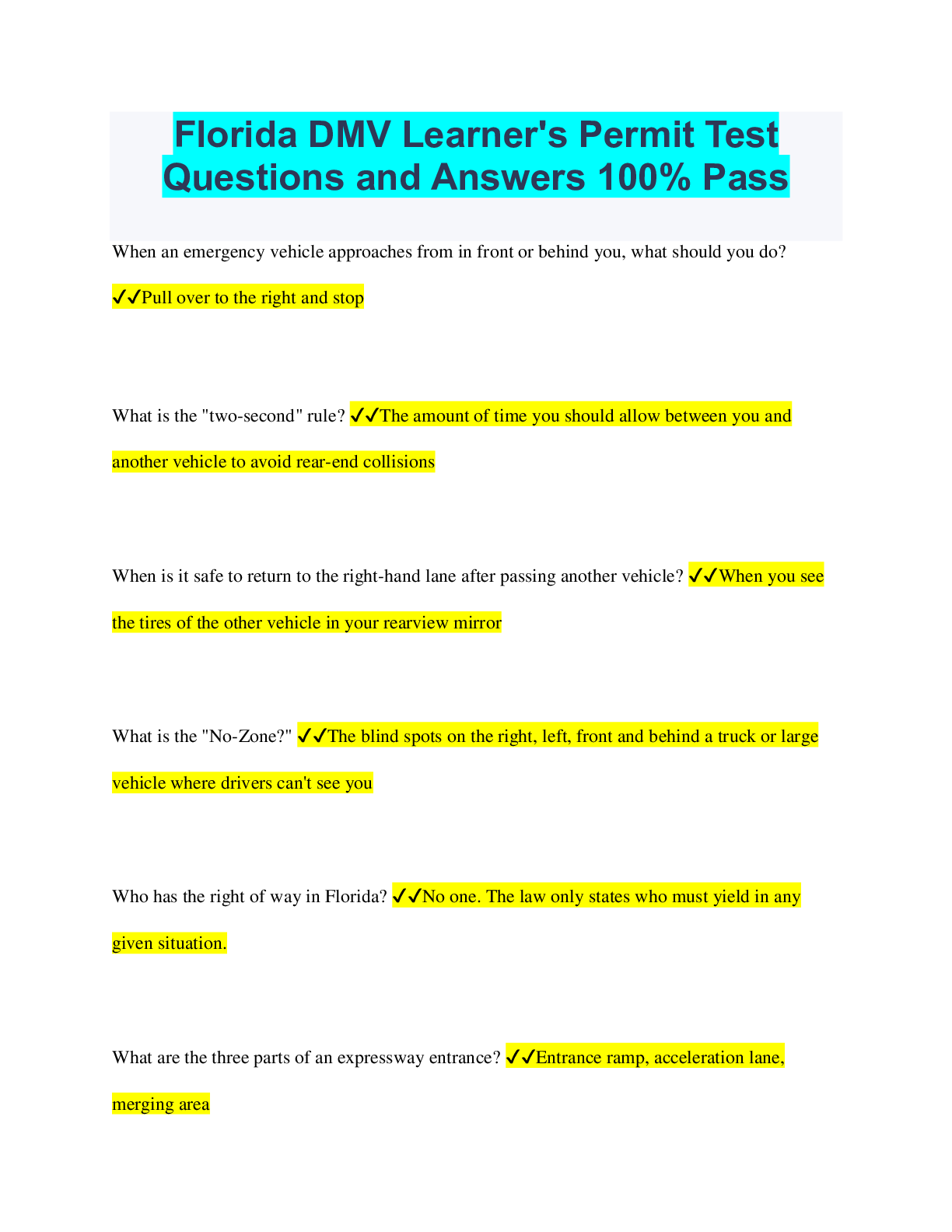
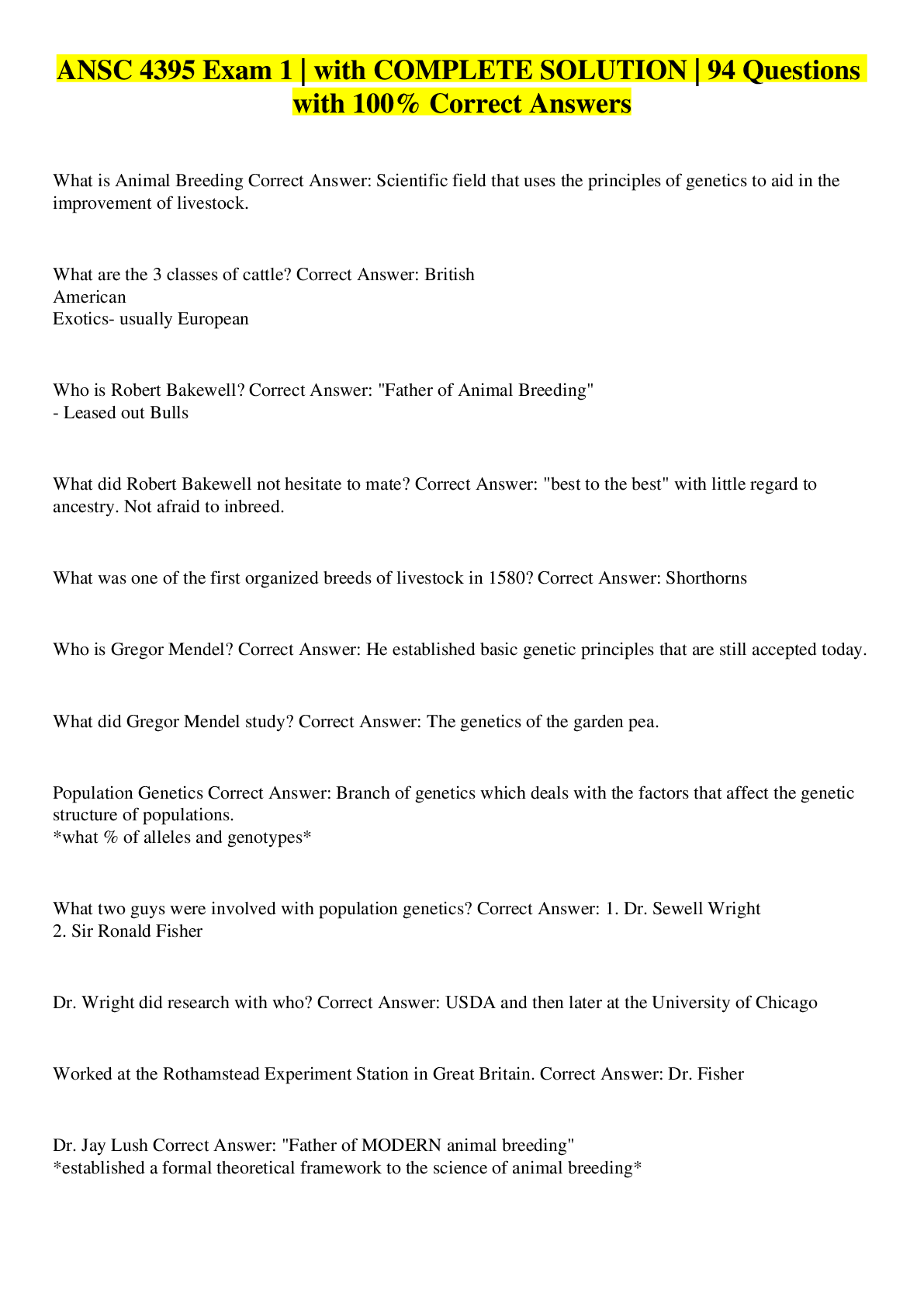

.png)








